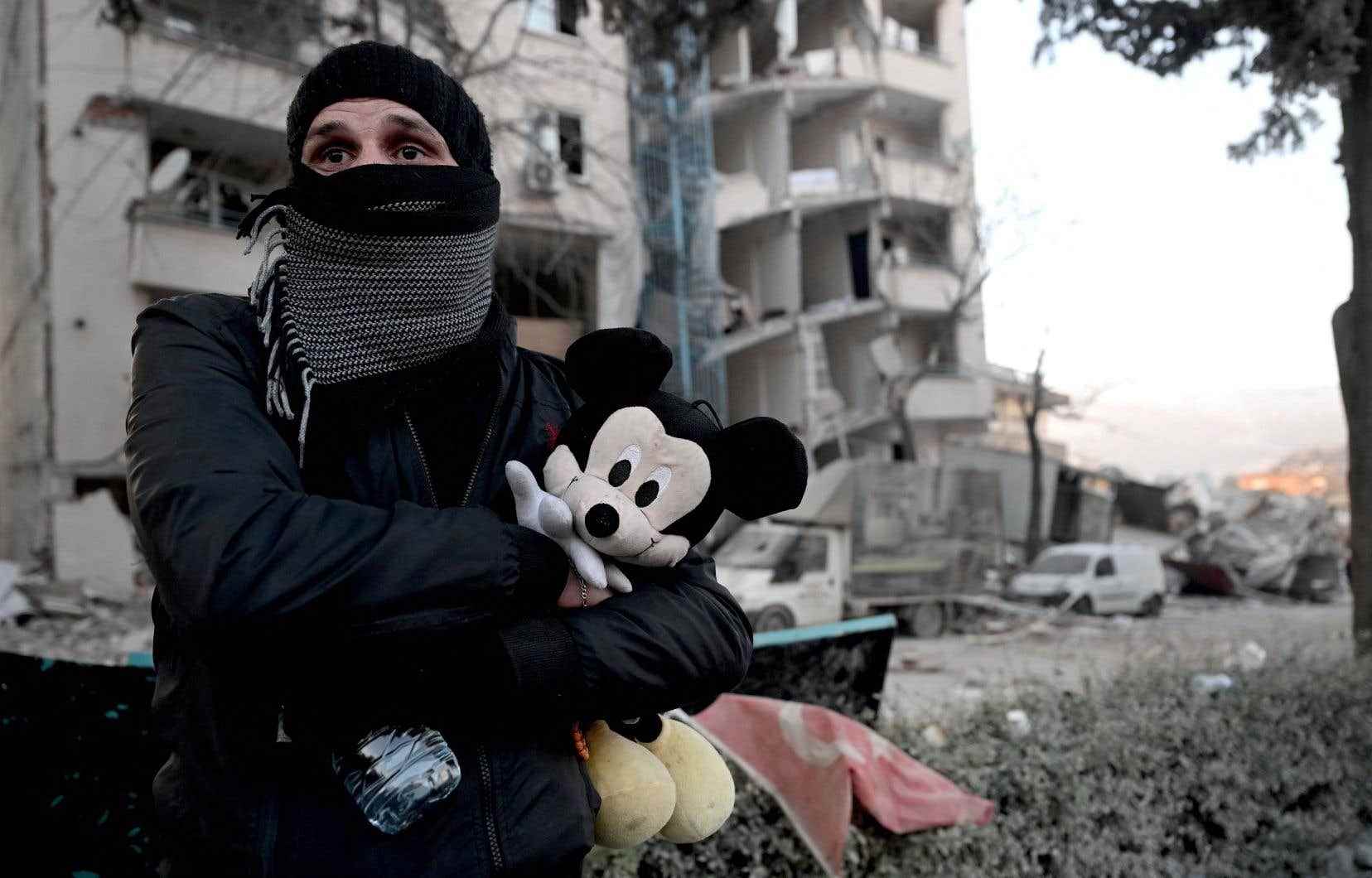Rescuers have miraculously extracted new survivors from the rubble in southern Turkey, where aid is now flowing, a week after the earthquake which killed more than 35,000 people but the situation remains very complex in Syria.
These rescues are unexpected because they occurred well beyond the crucial period of 72 hours after the disaster that struck the two countries.
During the night from Sunday to Monday, seven people were released alive in Turkey, according to the press, including a three-year-old child in Kahramanmaras and a 60-year-old woman in Besni. Another, 40, was also rescued after 170 hours in Gaziantep.
A member of a British rescue team posted a video on Twitter on Sunday showing a rescuer going through a tunnel dug in the ruins of the same city and pulling out a person stranded for five days.
And in the southern city of Kahramanmaras, near the epicenter of the earthquake, excavators were at work, while victims, huddled around a fire, awaited news of their loved ones.
In total, more than 34,000 people are currently working to find survivors, said Turkish Vice President Fuat Oktay. Some 1.2 million people were housed in student residences and 400,000 evacuated, he added.
Help is now flowing
In Antakya, the Antioch of Greek Antiquity, after the first three or four days of abandonment, relief is now organised.
Basic toilets, without water, have been installed, to the great relief of the survivors, and the telephone network has been restored in several neighborhoods.
In Kahramanmaras, the epicenter of the earthquake, 30,000 tents have been erected, while 48,000 people are accommodated in schools and 11,500 in sports halls, Interior Minister Suleyman Soylu said.
A strong police and military presence is now visible, the authorities specifying that it is a question of preventing looting, after incidents this weekend.
Many residents of Antakya interviewed by AFP nevertheless explain the thefts in supermarkets in the first days by the absolute necessity in which many found themselves, deprived of water, electricity and money, for lack of support from the authorities. .
Now, according to AFP teams, in Antakya as in Kahramanmaras, aid is flowing.
Also in this second city, toilets begin to appear.
And AFP everywhere noted a very strong solidarity of the population towards the inhabitants of the disaster areas.
However, in the province of Hatay, trucks have just abandoned aid parcels in the street to avoid waiting at a relief centre.
In addition, we could see on a video, some aid workers randomly threw clothes into the crowd.
Devastated places of worship
Meanwhile, search operations have ended in Sanliurfa, Kilis, Osmaniye and Adana, according to Turkish media.
On the other hand, noted the Minister of the Interior, they continue in 308 places in Kahramanmaras.
As for primary and secondary schools in 10 cities that suffered from the earthquake, they will remain closed until 1er March, said Education Minister Mahmut Ozer.
In the other cities, schools will reopen on February 20.
The earthquake also reduced to dust important places of worship.
In Antakya, Havva Pamukcu, a devotee of the Habib-I Nejjar mosque, cannot believe it.
“This place means a lot to us,” she sighs. “People used to come here before going on pilgrimage to Mecca.”
The Orthodox Church suffered the same fate there, notes Sertac Paul Bozkurt, member of the council administering this place of worship.
“All its walls have collapsed and it is in no condition to shelter prayers,” he laments.
Very difficult situation in Syria
In Syria, the situation remains very difficult.
Bab-al Hawa, in the northwest, remains the only operational crossing point from Turkey to the rebel areas, also devastated by the earthquake.
Trucks, with on board enough to make emergency shelters using plastic sheeting, as well as blankets, mattresses, ropes or even screws and nails, crossed the border.
Insufficient aid, admitted the UN.
“Until now, we have failed the people of northwestern Syria,” acknowledged the head of the UN humanitarian agency Martin Griffiths. “They rightly feel abandoned” and it is necessary “to correct this failure as soon as possible”.
The head of the World Health Organization (WHO) Tedros Adhanom Ghebreyesus met Syrian President Bashar al-Assad in Damascus on Sunday, saying that the latter had shown himself ready to consider the opening of new crossing points to transport aid to rebel areas.
According to Syrian Transport Ministry official Suleiman Khalil, 62 planes loaded with aid have so far landed in Syria and more are expected in the coming hours and days, particularly from Saudi Arabia.
According to the latest official reports, the earthquake of February 6, of magnitude 7.8, killed at least 35,224 people: 31,643 in southern Turkey and 3,581 in Syria. The UN said on Sunday that the toll could still “double”.
